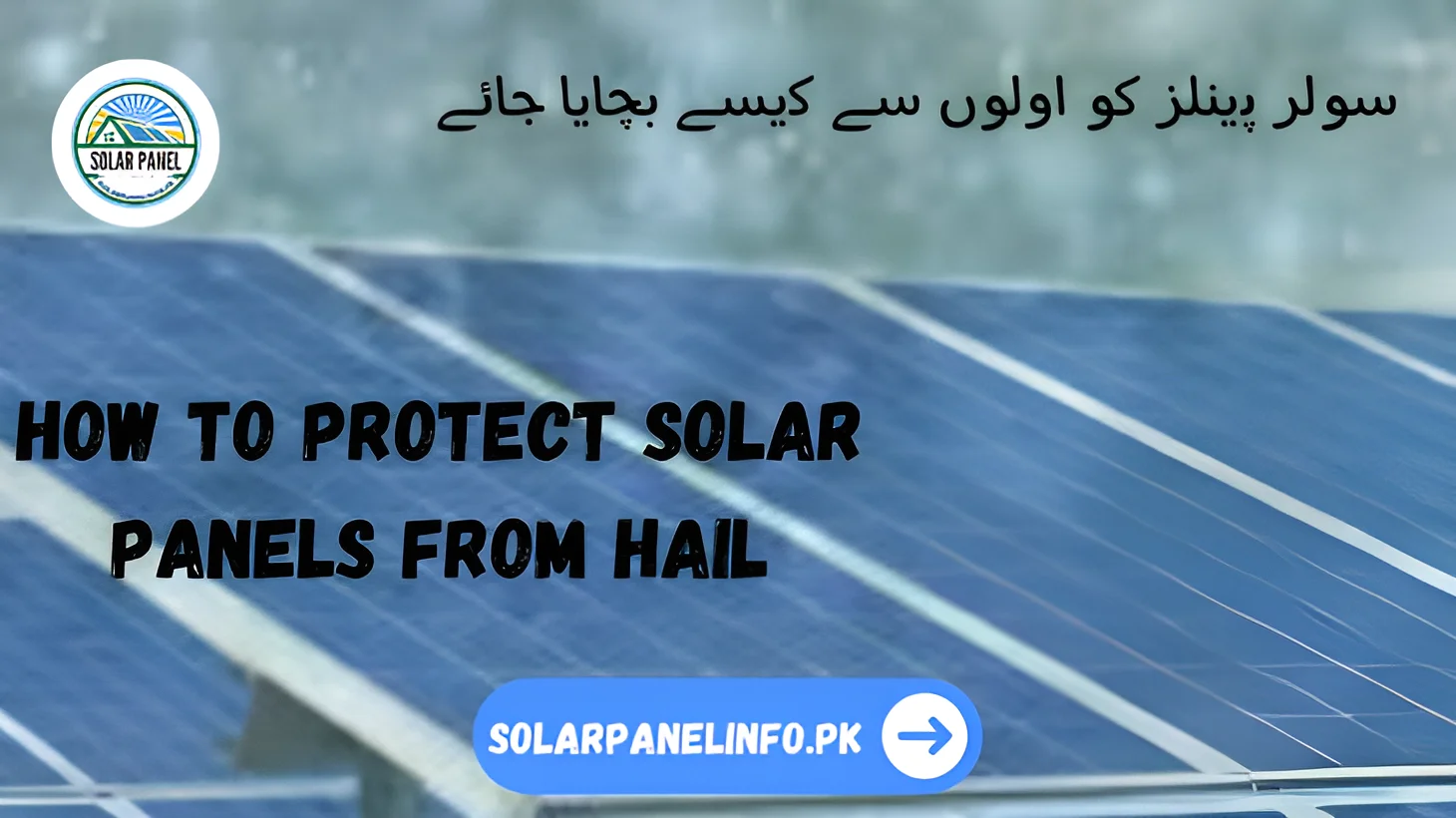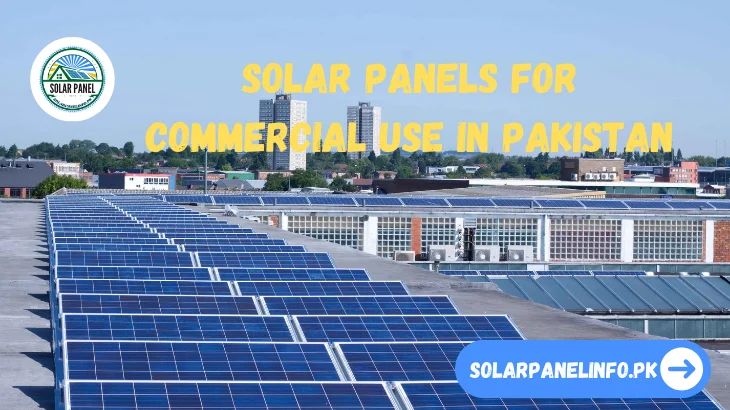How to Protect Solar Panels from Hail
Solar panels serve as a dependable and eco-friendly energy source, but they may be susceptible to severe weather events such as hail. Hailstorms can inflict considerable damage on solar panels, leading to expensive repairs or replacements. Nevertheless, there are numerous precautionary steps you can implement to shield your solar panels from hail damage and enhance their durability. In this article, we will discuss the methods to protect your solar panels against hail, along with actions to take if hail damage occurs.

شمسی توانائی کے پینل ایک قابل اعتماد اور ماحول دوست توانائی کے ذریعہ کے طور پر کام کرتے ہیں، لیکن وہ شدید موسمی واقعات جیسے کہ اولے کے لیے حساس ہوسکتے ہیں۔ ژالہ باری سولر پینلز کو کافی نقصان پہنچا سکتی ہے، جس کی وجہ سے مہنگی مرمت یا تبدیلی ہوتی ہے۔ اس کے باوجود، آپ کے سولر پینلز کو اولوں کے نقصان سے بچانے اور ان کی پائیداری کو بڑھانے کے لیے آپ بہت سے احتیاطی اقدامات کر سکتے ہیں۔ اس آرٹیکل میں، ہم آپ کے سولر پینلز کو اولوں سے بچانے کے طریقوں پر بات کریں گے، اس کے ساتھ ساتھ اولوں سے نقصان ہونے کی صورت میں اٹھائے جانے والے اقدامات پر بھی بات کریں گے۔
Choose High-Quality, Durable Solar Panels
One of the best methods to safeguard solar panels from hail damage is to select high-quality panels that are engineered to endure severe weather conditions. Numerous solar panels are designed to resist hail, featuring tempered glass that can absorb shocks without breaking. When choosing solar panels, consider the following:
Hail Resistance Rating(ہیل مزاحمتی درجہ بندی)
Some manufacturers test their solar panels to confirm they can tolerate hail of specific sizes and velocities. Panels that have a verified hail resistance rating are less likely to sustain damage during hailstorms.
Tempered Glass(ٹیمپرڈ گلاس)
Panels made with tempered glass are more robust than those made with standard glass and can better handle impacts from hailstones.
Polycrystalline vs. Monocrystalline( پولی کرسٹل لائن بمقابلہ مونو کرسٹل لائن)
While both types of panels are typically sturdy, polycrystalline panels might offer slightly better resistance to impacts due to their design.
Install a Roof Overhang or Shade Structure
Building a roof overhang or shade structure over solar panels can protect them from hailstorms by deflecting hailstones and reducing damage. Homeowners may choose canopies or awnings that allow sunlight to reach the panels while providing shelter. When designing the overhang, it should be positioned to avoid shading the panels and constructed from materials that can withstand strong winds and heavy hail.
Use a Solar Panel Monitoring System
Solar panel monitoring systems help you track how well your panels are performing in real-time. If a hailstorm happens, the system will alert you right away if the panels are damaged. This way, you can quickly decide if you need repairs or replacements. Regular monitoring helps catch minor issues before they become major problems.
Some modern systems can automatically detect damage, allowing you to quickly fix or replace any affected panels.
Choose the Right Installation Location
When installing solar panels, it is crucial to select a location that minimizes the potential for hail damage.
Here are a few important factors to consider:
Roof Height(چھت کی اونچائی)
Installing panels at higher elevations can significantly reduce the likelihood of hail and debris impact. If feasible, place your solar panels higher on the roof or on a structure that is less susceptible to direct hailstorm paths.
Read more: Install Solar Panels on the Roof
Tilt Angle(جھکاؤ کا زاویہ)
The tilt angle of solar panels plays a vital role in their resilience against hail. Panels set at an optimal tilt—typically between 10 to 30 degrees—are less prone to receiving direct hits from falling hailstones, helping to protect their surfaces from potential damage.
By carefully considering these factors, you can enhance the durability and longevity of your solar panel installation.
Get Insurance for Your Solar Panels
Consider getting solar panel insurance to protect against hail damage. While some homeowners’ insurance policies cover solar panels, it’s important to verify if hail damage is included. Additional coverage may be necessary for your solar energy system. Solar panel insurance can help with repair or replacement costs after hailstorms, so ensure your policy offers comprehensive protection for extreme weather events.
Consider Hailstorm-Proof Solar Panels (In High-Risk Areas)
If you live in an area with frequent and severe hailstorms, consider using hailstorm-proof solar panels. These panels are built to last and can handle intense hail. While they may cost more than regular panels, they provide extra protection in harsh weather.
Some manufacturers offer warranties for hail damage, promising that their panels won’t break from hail up to a certain size, like 1-inch hailstones. Check the warranty and details before buying hail-resistant panels.
What to Do if Your Solar Panels Are Damaged by Hail
If a hailstorm damages your solar panels, it is important to take the following steps to address the situation effectively:
Inspect the Panels(پینلز کا معائنہ کریں)
Once the storm has passed, conduct a thorough visual inspection of your solar panels. Look for any visible signs of damage such as cracks, dents, or shattered glass.
Check the Monitoring System(مانیٹرنگ سسٹم چیک کریں)
Utilize your solar panel monitoring system to check for any drop in power output or other indicators of potential damage. This can help identify issues that may not be immediately visible.
Contact a Professional(کسی پیشہ ور سے رابطہ کریں)
If you detect any damage during your inspection, it is advisable to reach out to a qualified solar technician. They can provide a professional assessment and carry out necessary repairs. Attempting to repair the panels on your own may void warranties and could lead to further complications.
Check Your Insurance(اپنی انشورنس چیک کریں)
If you have insurance coverage for your solar panels, consider filing a claim to help cover the cost of repairs or replacement.
By following these steps, you can ensure that your solar energy system is properly assessed and maintained after a hailstorm.
Conclusion
Safeguarding your solar panels against hail is essential for preserving their efficiency and lifespan. By choosing high-quality panels, implementing protective strategies such as overhangs and monitoring systems, and selecting hail-resistant technologies, you can reduce the risk of damage. Furthermore, considering insurance for your solar panels and regularly checking your system can facilitate quick repairs if any damage occurs. By following these guidelines, you can protect your investment in solar energy and continue to benefit from renewable, eco-friendly power, even during severe weather events.
اپنے سولر پینلز کو اولوں سے بچانا ان کی کارکردگی اور عمر کے تحفظ کے لیے ضروری ہے۔ اعلیٰ معیار کے پینلز کا انتخاب کرکے، حفاظتی حکمت عملیوں جیسے اوور ہینگس اور مانیٹرنگ سسٹمز کو نافذ کرکے، اور اولے سے بچنے والی ٹیکنالوجیز کا انتخاب کرکے، آپ نقصان کے خطرے کو کم کرسکتے ہیں۔ مزید برآں، اپنے سولر پینلز کے لیے انشورنس پر غور کرنا اور اپنے سسٹم کو باقاعدگی سے چیک کرنا اگر کوئی نقصان ہوتا ہے تو فوری مرمت کی سہولت فراہم کر سکتا ہے۔ ان رہنما خطوط پر عمل کر کے، آپ شمسی توانائی میں اپنی سرمایہ کاری کی حفاظت کر سکتے ہیں اور شدید موسمی واقعات کے دوران بھی قابل تجدید، ماحول دوست توانائی سے فائدہ اٹھاتے رہ سکتے ہیں۔
FAQ’s
Can solar panels withstand hailstorms?
Many modern solar panels, especially those with tempered glass and high hail resistance ratings, are built to withstand hail. Choosing high-quality panels is crucial for optimal protection.
What can I do to protect my solar panels from hail?
To protect solar panels, you can install roof overhangs, use protective netting or covers, select high-quality panels, and implement a solar monitoring system to detect damage.
Is insurance necessary for solar panels?
Some homeowner insurance policies cover solar panels, but it’s important to check if hail damage is included. Additional solar panel insurance can provide coverage for repair or replacement costs in case of damage.


